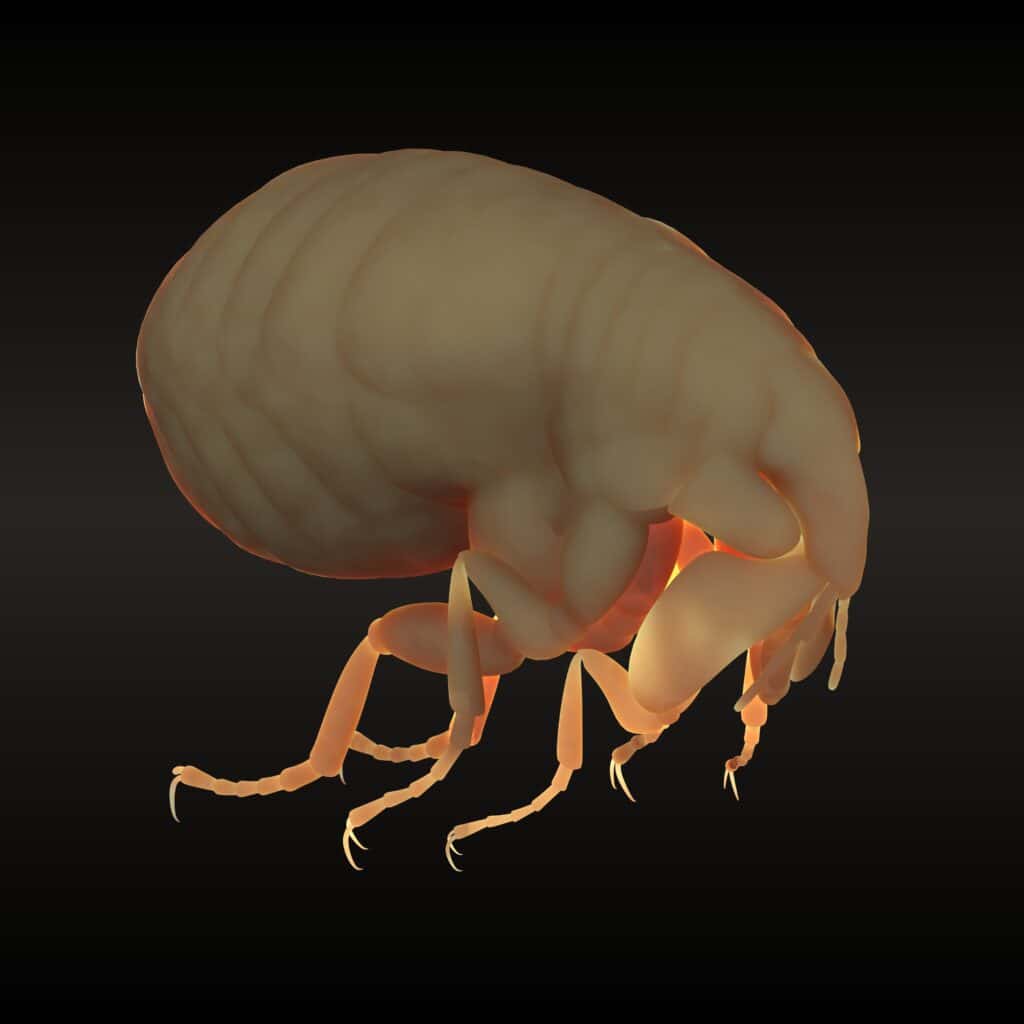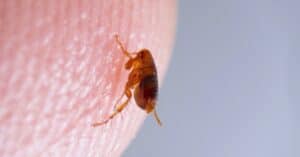Multiple insects and crustaceans are nicknamed sand fleas, though most of these creatures aren’t fleas at all. For example, mole crabs are referred to as sand fleas, but they are crustaceans. Biting midges and sandflies are biting insects that are also known as sand fleas. So, how big do these animals get? Keep reading to find out!
What are Chigoe Fleas?
Chigoe fleas (Tunga penetrans) go by many names, including sand fleas and jiggers. They are tiny fleas that burrow under the skin of their hosts, before dying, leaving the host animal open to the possibility of becoming infected with tungiasis. If left untreated, tungiasis can result in gangrene. Chigoe fleas have sharply angled heads, though, otherwise, they look similar to other types of fleas. They thrive in tropical and sub-tropical regions of the world. They are found on beaches, farms, and in stables. Chigoe fleas are native to Mexico, Africa, and the West Indies. This parasitic insect has small legs that expand as the female chigoe flea feasts on the host’s blood, producing eggs. Though there are 12 other species in the Tunga genus, Chigoe fleas are unique in their ability to infect 26 different species of animals. Chigoe fleas are found in 88 countries.

Chigoe fleas are tiny parasitic insects that burrow under the skin of their hosts.
©3drenderings/Shutterstock.com
How Big are Chigoe Fleas?
Chigoe fleas are very small, only about 1mm (0.03 inch) and rarely grow larger than a pea. It’s a lot easier to spot these fast jumping parasitic insects after they bite, leaving pea-sized marks on their hosts that can become itchy and enflamed. Chigoe fleas are the small, but as they feed, they can grow up to 1 cm across, but rarely larger.
What are Biting Midges?
Biting midges (Ceratopogonidae) are small, gray and red flying bugs that feast on humans. Nicknamed no-see-ums, they are associated with the nasty bites they leave on people. There are over 4,000 species of biting midges found around the globe. The only places biting midges don’t live are the Arctic and Antarctica. These sand fleas have a short lifespan, living only 2-6 weeks. Biting midges thrive in wet, humid, and sandy areas.

The only places biting midges don’t live are the Arctic and Antarctica.
©Henrik Larsson/Shutterstock.com
How Big do Biting Midges Get?
Biting midges are only slightly larger than chigoe fleas. They are typically 1mm (0.03 inch) but can grow up to 3mm (0.11). While rare, some species can grow as large as 4mm, still barely the size of the tip of a pencil. The midge’s bite will leave a mark that is actually larger than the insect itself!
What are Mole Crabs?
Mole crabs (Emerita analoga) are the largest of the animals that are called sand fleas. Mole crabs are decapod crustaceans that burrow into the sand along the surf. They have barrel shaped bodies and use their antennae for filter feeding. Mole crabs use their tight appendages and strong exoskeleton to roll in tidal currents.They are usually orange, cream, white, or yellow with unique markings that allow them to blend into the sand. Interestingly, mole crabs burrow into the sand tail-first, which is why when the tide rolls out, you can sometimes see their small antennae poking out of the sand. Mole crabs live 2 to 3 years and produce orange eggs, which the females keep protected on their undersides.

Mole crabs use their tight appendages and strong exoskeleton to roll in tidal currents.
©iStock.com/Jaimie Tuchman
How Big do Mole Crabs Get?
On average, mole crabs are 3.5 centimeters (1.4 inches) long and 2.5 centimeters (1 inch) wide, though some mole crabs can reach lengths of up to 10 centimeters (4 inches). Female mole crabs can be up to twice as large as male mole crabs. Their size differential is attributable to the female mole crab’s need to accommodate up to 40,000 eggs at a time.
Up Next:
- The Different Ways Dogs Get Fleas (And How to Get Rid of Them)
- Fleas vs. Ticks: What Are Their Differences?
- Do Fleas Die in the Winter?
The photo featured at the top of this post is © iStock.com/Vinicius-Moreira
Sources
- sciencedirect.com, Available here: https://www.sciencedirect.com/topics/immunology-and-microbiology/tunga#:~:text=Chigoe%20(Tunga%20penetrans)&text=1%20mm%20in%20length)%2C%20the,from%20that%20of%20most%20fleas.
- pestweb.com, Available here: https://pestweb.com/pests/985/chigoe-flea
Thank you for reading! Have some feedback for us? Contact the AZ Animals editorial team.






